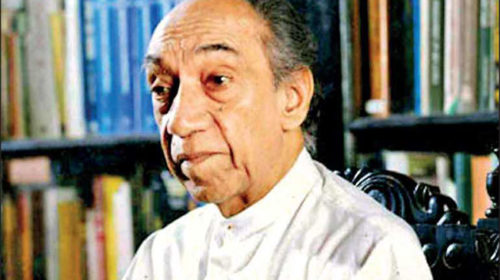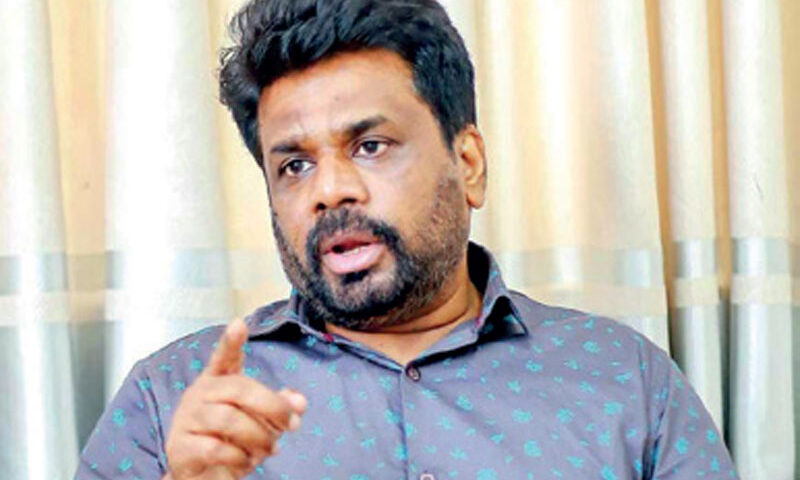A strategy for leftists and nationalists
by Uditha Devapriya- The Island
 Since at least 1977, nationalists and leftists have constantly been defining themselves against one another. The key years in which this gulf widened would be 1980 (the July strike), 1982 (the presidential election), 1983 (the anti-Tamil pogrom and the proscription of the Left), and 1987 (the Indo-Lanka Accord). What we see in those years is a middle-class abandoning the Left: partly on account of an ideological turnaround, but also, more crucially, on account of the different trajectories such ideologies took following J. R. Jayewardene’s liberalisation of the economy. The result of this was, simply, that a nascent middle-class bourgeoisie, disillusioned with the prospects of Marxism in Sri Lanka, turned away from socialist politics and began to articulate an exclusivist and communalist ideology.
Since at least 1977, nationalists and leftists have constantly been defining themselves against one another. The key years in which this gulf widened would be 1980 (the July strike), 1982 (the presidential election), 1983 (the anti-Tamil pogrom and the proscription of the Left), and 1987 (the Indo-Lanka Accord). What we see in those years is a middle-class abandoning the Left: partly on account of an ideological turnaround, but also, more crucially, on account of the different trajectories such ideologies took following J. R. Jayewardene’s liberalisation of the economy. The result of this was, simply, that a nascent middle-class bourgeoisie, disillusioned with the prospects of Marxism in Sri Lanka, turned away from socialist politics and began to articulate an exclusivist and communalist ideology.
The dangers and limitations of this world-view have been addressed by several intellectuals within the Left. Yet the question can be raised as to how effective such critiques have been in exposing the flaws of an ideology which appeals to an upward aspiring middle-class. Do we then need to come up with an alternative critique, one that reveals the flaws of communalism more effectively? If so – and there’s no doubt that we ought to – what should the objective of such a critique be: the abandonment of Sinhala nationalism in toto, or the abandonment of its more regressive aspects and the fusion of its progressive elements with the radical Left? I, for one, prefer the latter approach. But do Left intellectuals advocate it?
For the most, they do not. One can ask why, but there are far more important questions. How is it that socialism, which once cohered well with nationalism (even Sinhala nationalism) in the country, came to divorce itself from the wellsprings of nationalist thought? How is it that nationalists shed themselves of their earlier commitment to left-wing anti-imperialism? How is it that their world-view shifted from the writings of Frantz Fanon and Aimé Césaire to the rhetoric of what scholars have labelled as “clerico-fascists”? How is it that progressives in the nationalist camp no longer seem willing to side with the Left?
I suggest that the answers to these questions lie in two matters: the post-1977 trajectory of intellectual formations allied with the Left, and the response of these formations to not just Sinhala nationalism, but the idea of Third World nationalism in general.
The first matter is easy to figure out. In a provocative critique of Edward Said (“Orientalism and After: Ambivalence and Cosmopolitan Location in the Work of Edward Said”), Aijaz Ahmad makes an interesting point about Third World intellectuals: that with the retreat of the Left across the world, many of them aligned themselves with a left-wing intellectual formation while spouting an “openly and contemptuously anti-communist” line.
These trends picked up with the onset of the neoliberalisation of Third World societies. They led to two crucial outcomes: the exodus of academics allied with the Left to a donor funded, “postmodern” civil society sphere, and the neglect of such classical Marxist concerns as class in favour of such micro-political “single issues” as ethnic identity.
Before one reads this as a complete abandonment of class in socialist polemics, it must be pointed out that classical Marxists concerns were, in fact, deployed from time to time by the new NGO outfits. Marxism was used extensively in support of Tamil nationalist aspirations, even in support of Tamil secessionism, by a number of intellectuals.
Yet its application was, for the most, selective and arbitrary: as the years passed, people saw it as favouring a minority discourse over, and against, the claims of Sinhala nationalism. I certainly believe Marxist intellectuals erred in advocating the one and criticising the other. But this is not to say that siding with Sinhala nationalists would have been right either; a more correct strategy would have been to shoot down both Tamil and Sinhala claims: the line taken up by Tamil leftists in opposition to the Sinhala Only Act in 1956.
“This is not the time… for despair and anger for the Tamil people, but one for sustained opposition to injustice and sustained effort for the formation of a Government of justice. In no case must Tamil people think in terms of division; instead they must think of building the closest unity with the Sinhalese people… [I]t is very curious but true that there are only two nationalist parties in the country, namely, the LSSP and the Communist Party, and that all other parties have given up their national character, having become sectional political parties.” (P. Kandiah, Debate on the Official Language Act No.33, 1956)
Three points undergird Kandiah’s opposition to the Act: that legislation denying the rights of a community to its own language must be seen as a national and not ethnic issue; that Tamil people must form a broad alliance with their Sinhala counterparts; and that the Left is more eminently nationalist than communalist “sectional” parties.
By the latter, Kandiah includes not just the SLFP , but also the ACTC and the Federal Party, as well as the UNP, whose most prominent voice in parliament, J. R. Jayewardene, fired the first shot in the language debate four years before independence by “proposing” Sinhala Only. Grouping these outfits together, Kandiah then presents them as birds of a feather pandering to different forms of communalist nationalism. Having done so, he comes up with a critique of such nationalism from a class perspective: a perspective that could have been ably projected against the authoritarian neoliberal right in the 1980s.
That such a perspective was abandoned tells us a great deal about the strategies preferred and taken by the Left in later decades. While it would be wrong to conclude that the abandonment of such an approach led from the NGO sector’s co-option of sections of the Marxist Left, it is not wrong to see that process of co-option on a continuum, from the “neoliberalisation” of the economy after 1977 and the infusions of foreign aid which accompanied the “opening up” of the economy. In that scheme class no longer mattered: detached from the realm of production relations, identity politics became the mantra of the New Left.
This turnaround had its roots in the Left’s critique of all forms of Sinhala nationalism. Dayan Jayatilleka’s distinction between the patriotism of Weera Puran Appu and that of Anagarika Dharmapala is not necessarily one I agree with, yet it is far more nuanced than other such critiques. It is at once critical of the tribalist character of such nationalism and welcoming of its more progressive aspects. Yet such analyses are exceptional and rare.
Aijaz Ahmad explains what happened next: “Among critiques that needed to be jettisoned were the Marxist ones, because Marxists had this habit of speaking about classes, even in Asia and Africa. What this new immigration needed were narratives of oppression that would get them preferential treatment, reserved jobs, higher salaries in the social position that they already occupied: namely, as middle class professionals, mostly male.” In other words, these Left intellectuals, having given up class as a frame of reference, embraced other critiques that helped them join the ranks of a civil society salatariat.
Sinhala nationalists contributed to this state of affairs also. The Left’s cooption by NGOs essentially mirrored Sinhala nationalism’s departure from the Left. This is perhaps putting things in too reductive a light, but the point is that it happened, and that by the 1980s, the gulf between the two – nationalism and Marxism – had widened enough to warrant a breach, or a disjuncture, which led both to embrace establishments, institutions, and ideologies outside the political establishment: the Left to a donor funded civil society, and Sinhala nationalism to a communalist, chauvinist fringe. To blame the Left only here is to see the matter in favour of one side: the truth is that by ceding territory to right-wing politics, Sinhala nationalists did not just abscond from a progressive intellectual formation, it also “lost” the most progressive ally it could count on to a “third estate” hostile to both Marxism and nationalism.
What we need is a critique of both these processes – the “NGO-fication” of the Left and the radicalisation of Sinhala nationalism – which does not pit the one against the other. To put it in another way, we need a critique of the New Left that does not demonise Marxism from a nationalist standpoint, and a critique of Sinhala nationalism that does not deny its essentially progressive, anti-imperialist character.
I concede this is a difficult enterprise, but I believe it must be achieved, sooner than later. I say so because a rift between Marxism and nationalism can only speed up the distancing of the one from classical Marxist concerns and of the other from its anti-imperialist heritage. To allow this to happen would be to let both Marxism and nationalism abandon their progressive moorings. To allow that to happen would certainly be a tragedy.
The writer can be reached at udakdev1@gmail.com



